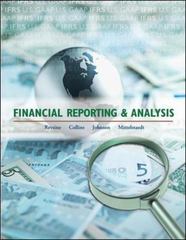Question
With asymmetric information, __________ (34) quality goods can drive __________ (35) quality goods out of the market. Consider the case of lemons in the second
With asymmetric information, __________ (34) quality goods can drive __________ (35) quality goods out of the market. Consider the case of lemons in the second hand car market. Assume that there are two types of cars: HQ (High Quality) and LQ (Low Quality) cars. Sellers know the quality of cars but the buyers do not. Half of the cars in the market are HQ and the other half is LQ. Thus the expected quality of a car bought in the market would be medium quality. This causes the __________ (36) for HQ cars to __________ (37). The quantity of HQ cars exchanged in the market falls. Thus the expected quality of a car in the market falls. This further __________ (38) the __________ (39) for HQ cars. The process continues until all the HQ cars are driven out of the market.
34. a) low b) high
35. a) low b) high
36. a) demand b) supply
37. a) fall b) increase
38. a) decreases b) increases
39. a) demand b) supply
There are three main methods to reduce emissions. These are emission standards, emission fees and trading emission permits. __________ (40) imply a quantity control over emission levels. However, they can not take into account the idea that some firms may have different __________ (41). __________ (42), on the other hand, present clarity regarding the cost of abatement. But the amount of emission abated remains uncertain. Alternative is to leave the emission abatement process to the __________ (43). This includes the introduction of __________(44).
40. a) Emission standards b) Marginal costs of abatement c) Emission fees d) Tradable emission permits
41. a) Emission standards b) Marginal costs of abatement c) Emission fees d) Tradable emission permits
42. a) Emission standards b) Marginal costs of abatement c) Emission fees d) Tradable emission permits
43. a) market b) government c) firms d) United Nations
44. a) Emission standards b) Marginal costs of abatement c) Emission fees d) Tradable emission permits
45. (This question is independent of questions 40 to 44.) If emission fees are used to control pollution, how does a firm decide on the amount of pollution to abate?
a) Equate the fee to the marginal cost of abatement.
b) Equate the fee to the marginal external cost.
c) Equate marginal external cost to the marginal cost of abatement.
d) Equate the fee to the marginal cost of production.
A public good is defined to be non-exclusive and non-rival. A good is __________ (46) if people can not be excluded from consuming it. Also, a good is __________ (47) if the provision of the good to an additional consumer has a marginal cost of zero. One of the problems related to the provision of public goods is the existence of __________ (48), i.e. consumers who do not pay for a non-exclusive good and still benefit from its existence. Due to their presence, markets fail and it is difficult to provide public goods through __________ (49).
46. a) non-rival b) Giffen c) inferior d) non-exclusive
47. a) non-rival b) Giffen c) inferior d) non-exclusive
48. a) externalities b) free riders c) abatement d) mosquitos
49. a) government b) monopoly c) television d) market mechanisms
50.Which of the followings was used in this course as an example of an exclusive but non-rival good?
a) Fisheries b) Public education c) TV signals d) Privately owned cars
Step by Step Solution
There are 3 Steps involved in it
Step: 1

Get Instant Access to Expert-Tailored Solutions
See step-by-step solutions with expert insights and AI powered tools for academic success
Step: 2

Step: 3

Ace Your Homework with AI
Get the answers you need in no time with our AI-driven, step-by-step assistance
Get Started


